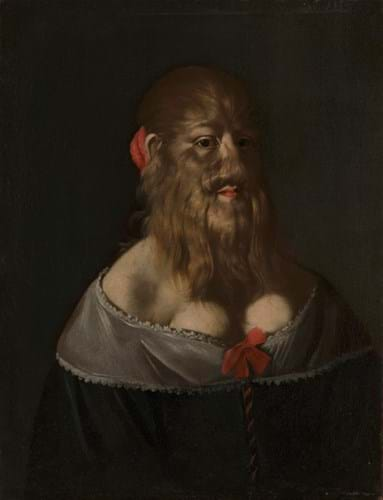
The sitter in the portrait, Barbara van Beck, was likely born with hypertrichosis universalis (also known as called Ambras syndrome), a disorder that results in excessive hair growth on the body. Fewer than 50 cases have been documented worldwide since the 16th century.
The remarkable oil on canvas that dates from the 1640s is probably the earliest painted depiction of a person living with the condition.
Agnews said in a post on Instagram: “We couldn’t think of a better home for this painting than the Wellcome Collection, with its dedication to fascinating and unusual artefacts exploring the connections between medicine life and art.”
Cultured subject
Barbara was originally from Germany but she married Johan Michael van Beck from the Netherlands in c.1655. He became her ‘manager’ as she travelled extensively throughout Europe, becoming something of a celebrity.
John Evelyn recorded meeting her in London in his diary in 1657 – describing her as a cultured woman who played beautifully on the harpsichord but had hair as “thick and even as growes on any womans head”.
The portrait of Barbara was likely painted in Italy and portrays the subject looking composed and wearing elegant clothes, rather than as a curiosity or freak. The Wellcome Collection already has five prints of subject in its holdings but this painting is the only known oil painting of the sitter.
Director of Agnews Anthony Crichton-Stuart told ATG: “I have always been struck by how full of life and beautifully observed the sitter’s eyes are. The painting feels like it was painted ad vivum, unlike the rather generic portraits of people afflicted with the same genetic disorder.”
Research development manager at the Wellcome Collection Dr Angela McShane said: “We know that Barbara van Beck was a successful public figure, renowned internationally, and that she turned this condition to her advantage.
“There’s so much more to understand about this work, and by making it available to a wider audience we hope not just to further our understanding of the very different social and medical context of this period, but also to challenge ourselves to think about life, health and our place in the world.”
The portrait will go on view at the Wellcome Collection in early 2018 and will also be showcased in a major conference on the Culture of Beauty being held at the venue in autumn 2018.
The Wellcome Collection is a free museum and library which was inspired by the medical objects and curiosities collected by American-British pharmaceutical magnate Henry Wellcome (1853-1936).





